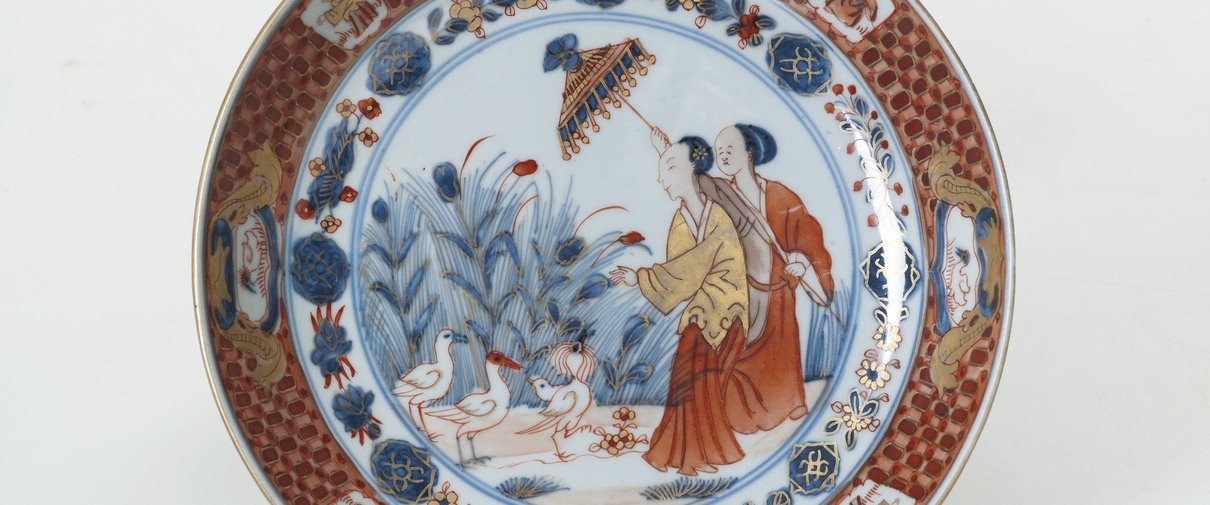Parasol Ladies
Feeding ducks. A typically Dutch activity, but here placed in a Chinese setting as an almost ritual meeting of man and animal. This depiction, designed by the Amsterdam artist Cornelis Pronk and painted on porcelain in the Far East, was intended for the Dutch market. In 1734, the Dutch East India Company, which controlled trade between the Netherlands and the Far East, asked Pronk to make designs for tableware decorations. These had to be depictions with a Chinese character, but in such a way that they would appeal to the Westerner. No dragons and tigers, but pleasant domestic scenes in Chinese style. These types of depictions are called chinoiseries. Pronk, who incidentally never visited China, made a number of series between 1734 and 1737.
One of those series is called The Parasol Ladies. The plate depicted here shows a lady at the water's edge. She is gesturing to three strange water birds that are standing in front of her in a row. The bird in front has its beak open. To the right behind the lady is a servant holding up a parasol. This parasol is supposed to protect the lady from the bright sun. Behind the birds is water, bordered by reeds and other vegetation. The plate is decorated in Imari style, with red, black, gold and lilac as the main colours. An inner border around the representation has eight rosettes with flower sprigs in between. The wide outer border has eight cartouches: four with a bird and four with a lady.
